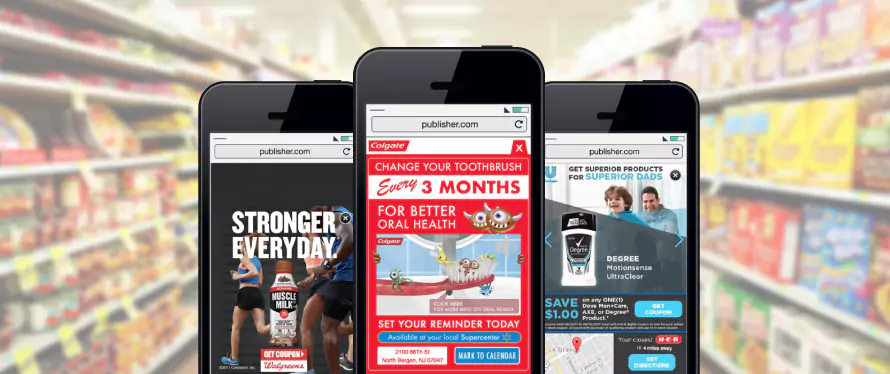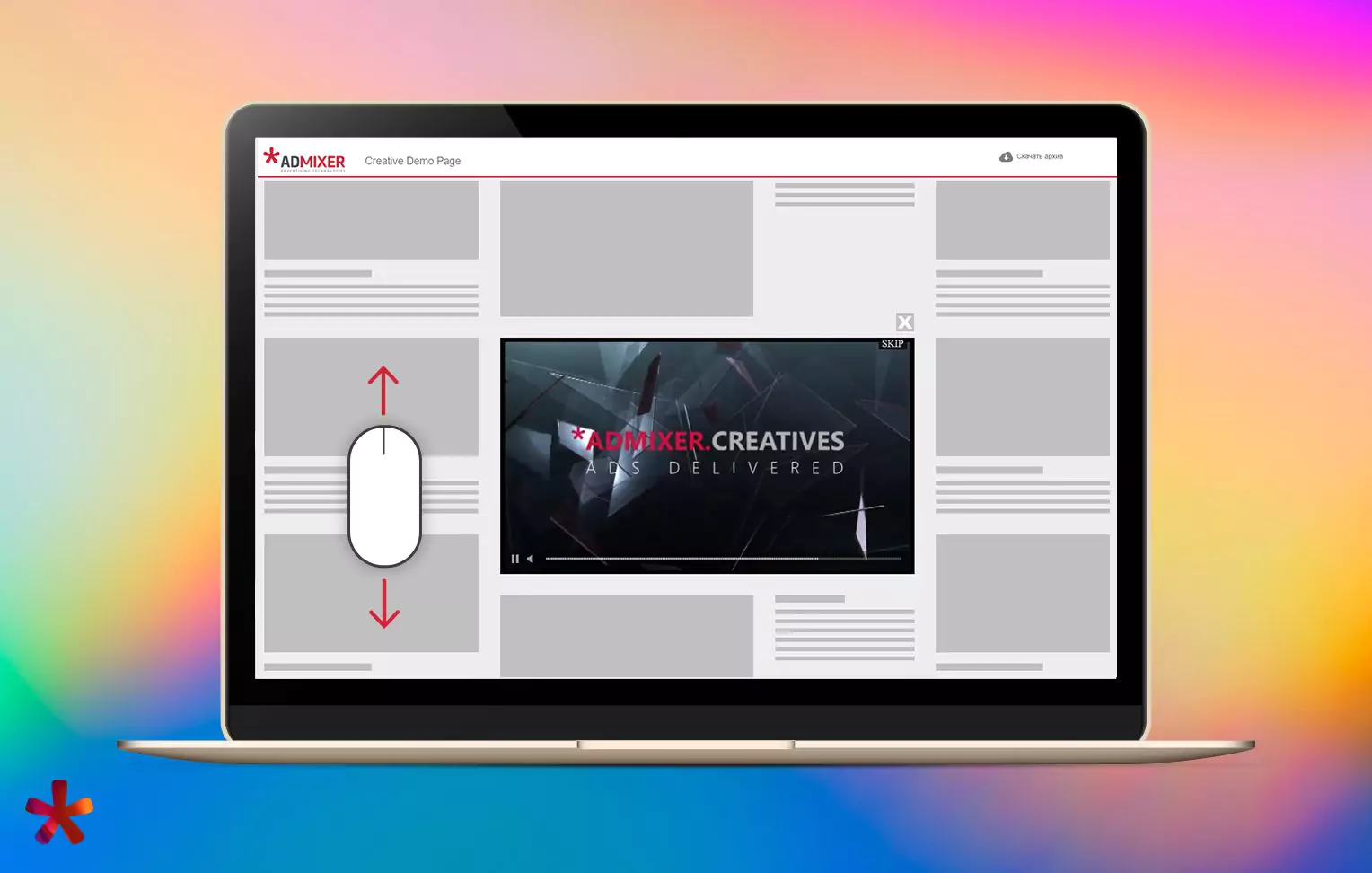Mobile Ads: Most Effective Advertising Trends In 2024
In the ever-evolving world of advertising, staying ahead of the curve is essential for marketers looking to make a lasting impact. As we step into 2023, the landscape of advertising is undergoing significant shifts, with mobile ads taking center stage. With smartphones becoming an integral part of our daily lives, it’s no surprise that advertisers are increasingly focusing on capturing the attention of mobile users.
More Screen Time: More Ad Time!

In a digital age where screens dominate our lives, advertisers are seizing the opportunity to connect with their target audiences like never before. Whether it’s during our daily commutes, leisurely evenings, or even our moments of downtime, our smartphones are our constant companions. And where there are screens, there’s potential for advertising.
The average person now spends a significant portion of their day glued to their mobile devices, scrolling through social media, watching videos, shopping online, and even working. This surge in screen time has presented advertisers with an immense canvas to display their creativity and engage with consumers on a more personal level.
In a hurry? Listen to the blog instead!
But What Is Mobile Advertising?
Mobile advertising, often referred to as “mobile ads,” is a dynamic marketing strategy designed specifically for smartphones and other mobile devices. It involves delivering promotional content to users through various mobile channels such as mobile apps, websites, social media platforms, and more. Mobile ads come in various formats, including banner ads, video ads, native ads, and interactive content.
With the proliferation of smartphones and the increasing amount of time people spend on their mobile devices, mobile advertising has become a powerful tool for businesses and brands to reach their target audiences, drive engagement, and ultimately achieve their marketing goals. It leverages the unique capabilities of mobile devices, such as location-based advertising (targeting and responsive design), to deliver highly personalized and contextually relevant ads to users, making it a crucial component of modern digital marketing strategies.

Finally, in the most simple words possible, mobile ads are the advertising industry’s response to a consumer base glued to their phones or other mobile devices. It is the type of product/service promotional strategy that you see on your smartphone. Now you might be wondering: “How does mobile advertising work?” Let’s learn how!
How Does Mobile Advertising Work?
Mobile advertising works by delivering targeted promotional content to users’ mobile devices, such as smartphones and tablets, through various channels and formats. Here’s a breakdown of how mobile advertising typically works:
Set Your Objective:
The process begins by establishing clear campaign objectives. These objectives could range from increasing brand awareness and driving app installs to boosting website traffic or generating sales leads.
Audience Targeting:
Advertisers identify their target audience based on factors like demographics, location, interests, and behavior. This ensures that ads are shown to the most relevant users.
Ad Format Selection:
Depending on the campaign goals and target audience, advertisers choose the most suitable mobile ad format. Common formats include banner ads, interstitial ads, native ads, video ads, and more.
Ad Design and Optimization:
Ads are designed to be mobile-optimized, ensuring they display correctly and are user-friendly on mobile devices. Ad creatives are typically designed to be visually appealing and engaging.
Ad Testing:
A/B testing and multivariate testing may be conducted to refine ad creatives and strategies for better results. This involves testing different ad variations to determine which performs best.
Mobile advertising involves a strategic approach that encompasses goal setting, audience targeting, creative design, data analysis, and continuous optimization to effectively reach and engage mobile users with relevant and compelling ads.
Why and what makes Mobile Ads so effective?

As can be seen from the graph, the number of smartphone users worldwide rose from 2.5 billion in 2016 to 3.8 billion in 2021. As the popularity of the world keeps growing at a steady rate, this graph is bound to see a two-fold increase in it in the next 3-4 years.
With such high usage, mobile advertising has made traditional methods like television ads, billboards, and print media obsolete thanks to billions of people just not looking towards them. Instead, most of them stare down at their phones which is where your ads should be too!

Mobile advertising works by recognizing that the intents of mobile users differ from those of desktop users. 92% of persons who conducted a mobile Google search ended up making a purchase. Mobile searches have a higher intent than desktop searches only because mobile users look something up in dire need, and desktop users might go around looking all over the web casually.
Let’s look at some statistics to clarify what sets mobile ads apart from other types of ads!
- 78% of 2.6 million monthly active users on Facebook spend their time scrolling on their mobile phones exclusively! Mobile advertising on Facebook is a must for small businesses and brands to get through to their audience!
- Instagram has 80% of users making choices about purchasing products, and watching mobile ads pop up on their feeds and stories!
- The number of global mobile users rose by 90 million between 2020 and 2021. That is a lot of users to show your mobile ads!
- After the pandemic, 70% of the global population has started using their phones as their primary source of entertainment.
- 50% of buyers online look up the products they need from their smartphones. It makes mobile ads the perfect opportunity for marketers to show their products off!
- 69% of global smartphone users were more likely to buy from stores that have mobile sites that answer their questions or address their problems.
- The United States was the world’s top mobile advertising spending market in 2020, with a total of $120.4 billion.
- If customers experienced an interruptive mobile experience, 60% of people would not buy from that brand again.
- Mobile advertising will account for more than half of all ad spending by 2022, surpassing desktop advertising.
- Marketers and advertisers spend 51% of their advertising budget on mobile ads.
- Facebook earns $9.16 billion, which is 87% of its revenue that comes from mobile ads! Advertising on Facebook doesn’t seem like a bad idea now!
Now that we have learned how mobile ads have taken over the digital marketing industry. Let’s look at all the different types these mobile ads come in!
Mobile Ads come in all shapes and sizes!

These ads vary widely based on purpose, form, and function. Mobile ads can sometimes get so native with the applications that differentiating between them could be demanding. Let’s look at how we can distinguish between these advertisements!
-
Banner advertisements:

These advertisements have been around for a long time now! Probably one of the oldest types of mobile advertising today, banner ads take up the top or the bottom of the screen. They are present on the app, and clicking on them redirects users to the brand’s websites or product catalog. According to Statista, banner adverts produced $7,778.5 million in sales in China in 2017.
The best dimensions for banner ads are 320 x 50 or 300 x 50 pixels for small devices. These dimensions have proven to be effective sizes for banner ads. It is crucial for advertisers to curate content on these dimensions, any smaller, and they look bad.
-
Native ads:

This type of mobile ad is designed to blend in with the websites where it is being hosted. With users who are averted to watching generic ads, native ads have proven to be a better alternative. They result in a high CTR and better engagement. Recognizing recent mobile ad trends helps make your ads blend in better with the websites you interact with.
-
Video Ads:

As the name suggests, mobile advertisements with visual elements such as videos are called video ads. Marketers use mobile video advertising to grab the attention of their users from their scrolling and check their ads out. Video ads are expensive to create than other ads but are one of the most effective methods to draw traction from social media. Advertising on Facebook commonly uses video ads throughout the platform!
Games on mobile phones have “rewardable video ads” that reward the player with in-game currency for watching a video ad. These ads are unskippable but motivate users to see them and have proven effective for the past four years.
-
Carousel Ads:

These require images with a 1:1 aspect ratio, and each ad can have up to ten pictures and hyperlinks. You get a headline of up to 40 characters, and your text must be within 90 characters, the same as video and image advertising. Your link description can only be 20 characters long. The content for your ad body will be within the images and videos in the carousel ads. Every picture may be an ad of its own or complement the next image in line.
-
Canvas or Interstitial Ads:

Interstitial advertising, often known as full-screen ads, appears during app transition points to make them more natural, such as progressing to the next game level, launching an app, or closing it. The larger size enables for a more comprehensive message and visually appealing visuals. Because of their size and larger impressions on users, these ads have a greater CTR than banner advertising.
The recommended dimensions for canvas ads are 320 x 480 pixels or 480 x 320 pixels depending upon the device orientation.

-
Rich media advertisements:

Advertisements that use a mixture of pictures, videos, audio, and mini-games are rich media ads. These mobile ads provide the user a small duration of experience of using the app that is advertised. They are proven to be effective among users who believe in the practical assessment of the apps they use.
These advertisements are all that you might see on your phone while browsing the internet or playing a game on your mobile! Mobile ads have become such a powerful tool for marketers to gather information about their audience, and it is! They have dominated the advertising industry, and marketers want to grab the ad real estate available on your phone screens to drive their sales up to the skies! But how do you use mobile ads to boost your ad campaign effectively? Let’s find out!
How do you effectively use mobile advertising for your ad campaign?

Campaigns involving mobile ads are similar to any other campaigns except that advertisements for these campaigns are tailor-made for mobile devices. Here are the steps for you to carry out your ad campaign efficiently with maximum results!
Set Objectives for the Ad Campaign!

As with any other marketing campaign, the first step in developing a mobile advertising strategy is identifying your objectives. A mobile ad campaign can raise brand awareness, help your brand generate sales, or drive more visits to your websites, depending upon the campaign goal. These objectives must be clear before starting a mobile ad campaign.
Gather knowledge about your audience

Although mobile interfaces are simpler than desktops, they have just as many distractions. You’ll need to know what form of messaging appeals to your ideal users if you want your message to cut through the clutter. You’ll also need to figure out which channels and publications your audience frequents. Gathering data regarding the above will provide a base for you to initiate your ad campaign. The foundation needs to be strong enough to build a strong ad campaign on top of it, which is why this research is crucial.
Set a Budget!

After analyzing what kinds of ads appeal to your audience, you must set a budget for your ad campaign. Budgeting helps you filter your choices and better examine your options for your campaign. Big flashy ads may be expensive, but pop-up ads on your audience’s mobile phones may generate more revenue in comparison.
How long will your campaign go on?

Begin by determining the length of your ad campaign. It is dependent on factors such as:
- Actions that users will be required to take (single click, multiple steps, etc.)
- Preferences of user groups as determined by previously generated data.
- Budgetary constraints
Your mobile ad length will be brief if a single click takes your user right to the purchase landing page. A campaign that aims to raise brand awareness as well as generate sales, on the other hand, will require numerous steps and thus be lengthy.
The duration of the mobile ad campaign also impacts the entire cost, resources, and time.
Know your audience (and their devices)!

Ad content will vary a lot depending on the devices that your audience is using. It is crucial to know the type of devices and other details like dimensions, and app-usage statistics to deliver a top-notch experience through your advertisements.
As a result, it’s critical to know what devices your target customers favor. Even within a device, the screen on time and app usage of your customers is vital too! Regional and national preferences differ as well and might scuff the results of your ad campaign.
Designing the Visuals

It is where the fun part begins! Creativity might not know any bounds while designing mobile ads for your campaigns, but it is vital to keep the goal in mind: to attract the viewer’s attention. High-quality graphic elements are present in the most effective ad campaigns because they succeed in grabbing the user’s attention.
Mobile video advertising is a must to have a hit ad today as most people see most ads on their mobile phones. Designing and curating content for mobile ads: need to ensure the clarity of the product and must have a call-to-action button to drive engagement to the website. Analyzing data on the demographics and tastes of your audience will give you a better idea of what to include in your ad designs too!
Management of Data Extracted

It is critical to respect the privacy of your users and consider the security of their data. It is vital to keep track of the information gathered during mobile promotions. During mobile campaigns, data is gathered from our customers who interact with our ads. It is a lot more than what you can get through desktop promotions on the internet. This information brings the brand and its consumers closer as it helps the brand to cater to its customer’s needs by listening to the feedback. It also helps curate the content as information on the ad trends and preferences exist in this data.
Test before launch!

Devote some time to testing your ads before launching them out to your consumers. In the initial release, monitor the responses that the mobile ads get and their reach. Make modifications as and when you see a slight deviation in the planned output of the campaign.
Also Read:
Is Advertising On Facebook Worth It?
Facebook Ad Examples: Anatomy And Types
How To Use Mobile Ad Trends For Maximum Impact
You could test your ads out and waste your time looking for results from them. Or, you could learn from the results of the test campaigns other brands and organizations have run! And we have the best database for ads from all over the world! Let us take a deeper look into it!
PowerAdSpy: All Ads from Everywhere, In Your Hands!
Ads everywhere are expensive. Brands invest a sizable portion of their capital every year into advertising their products but fail to pull them off effectively. Companies turn to advertisements because they are one of the most reliable means of drawing customers to a brand. A balanced and profitable advertising strategy, on the other hand, comprises programmatic interactions between brands and ads, with market demands in mind.
As a result, PowerAdspy, a platform trusted by Fortune 500 firms, shows you the winning ads of your competitors. It will help you see the direct connections between brands, publishers, networks, and execution platforms by providing vital details, as corporations base their marketing strategies on their competitors.
PowerAdSpy allows you to go through as many ads as you like: mobile ads or desktop ads. It has a diverse collection of advertisements all over the world. Look for ads anywhere using filters like their ad positions, geographical locations, etc. To best suit the niche of your brand and its audience!

Get real-time insights and analysis reports from ad campaigns run by your competitors. Or anyone in the world, for that matter! Get the data of millions of ads from 15+ countries, more being updated every day!

Search precisely for the ad you are looking for with several filters available. Tracking down an ad you saw the other day was never so easy!

Real-time analysis of the reach and impressions your ads have achieved so far is provided by PowerAdSpy in the form of an intuitive dashboard and easy-to-understand graphs so you can make changes to your campaign as soon as you catch the problem!

And the list goes on and on!
In other words, PowerAdSpy will save you enough time and energy for you to appreciate it for a long time. Say goodbye to all the woes related to your ad research and budgeting problems! Look at what your competitors are doing and if they are doing well, replicate! Learn from their mistakes and ace your mobile ad game with PowerAdSpy!
Conclusion
Mobile advertising is a dynamic and multifaceted marketing strategy that leverages the ubiquity of mobile devices to connect with target audiences effectively. By setting clear objectives, identifying the right audience, choosing appropriate ad formats, and utilizing data-driven insights, advertisers can craft compelling campaigns that resonate with users on their smartphones and tablets.
The ability to analyze real-time data, conduct ad testing, and make informed optimizations ensures that mobile advertising remains a highly adaptable and results-oriented approach. As technology continues to evolve and user behaviors shift, staying attuned to these changes and implementing best practices will be essential for continued success in the ever-expanding realm of mobile advertising.




